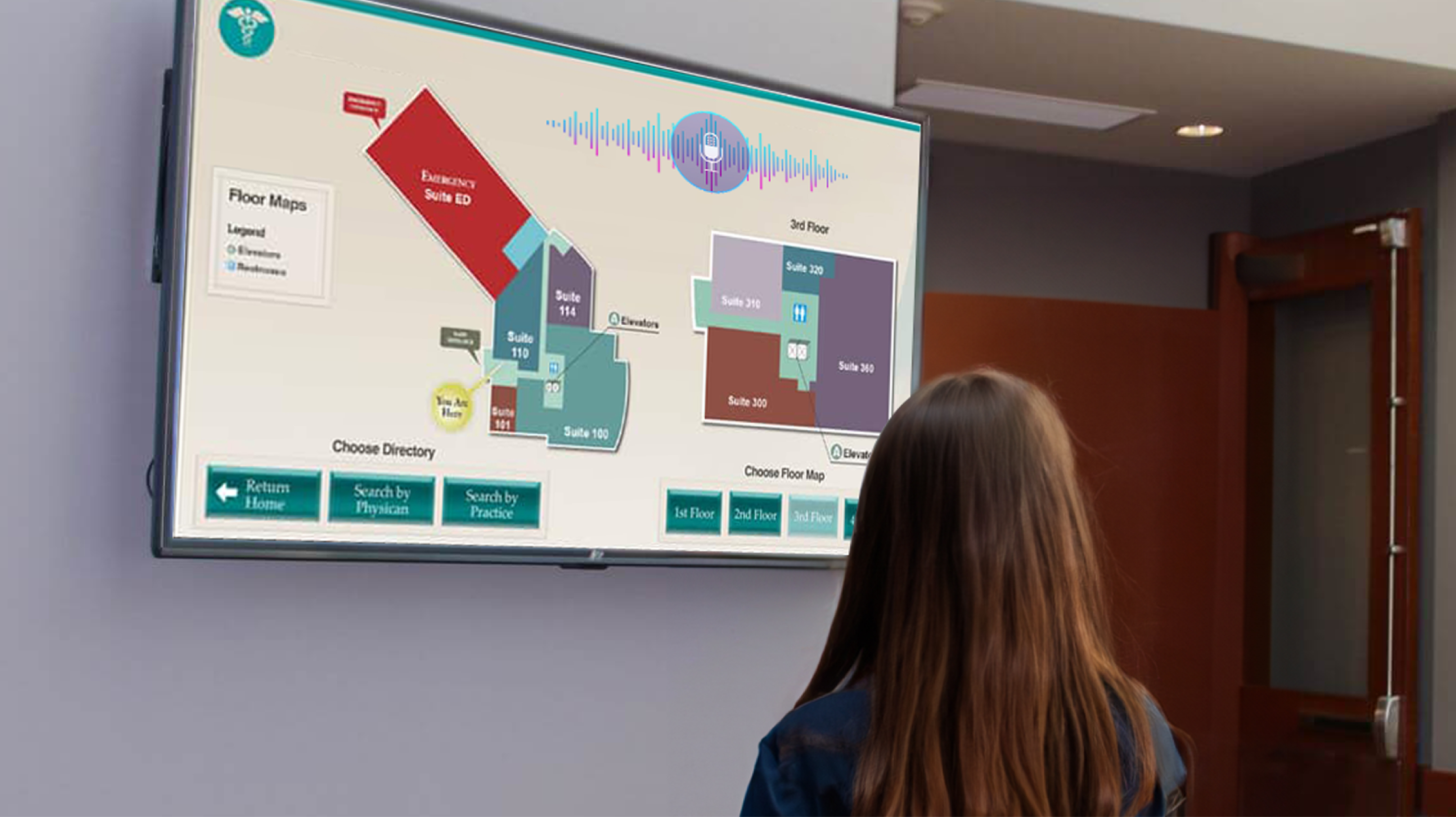We have come a long way since a computer passed the Turing test in 2014.
In just a decade, AI has become far more capable than ever before, with significant advances in Generative Pre-trained Transformers (GPT), Natural Language Processing (NLP), and the sophistication of learning models.
All this progress is only a natural outcome of our curiosity and fascination with AI and machine learning. It has left its mark in automation, healthcare, and retail. In fact, you name the industry and there is probably an AI-based success story ready to let out.
In line with the transformational potential of this technology, we don’t think it is an overstatement to say that we are at the cusp of a new era. Those who change and adapt to it will flourish. As a matter of fact, we believe that a transformative shift in the digital signage world is underway and personalization sits at its heart.
But, how can it better digital signage, and what can it do for your business? To begin with, AI can introduce both responsiveness and intelligence to digital signage. How, you may ask? We explain below.
Understanding the Role of AI-driven Digital Signage Personalization
AI-driven digital signage personalization uses machine learning algorithms to create customized digital displays. What this does is that it allows businesses to deliver personalized content delivery with AI in digital signage, resulting in more meaningful viewer engagement and enhancing user experience.
Let’s talk about “how”:
1. Personalized Content
Thanks to AI-driven digital signage personalization, you can now have a screen that can give personalized recommendations (using machine learning) in digital signage, based on your customers’ preferences, gender, age and browsing history.
This level of personalization can lead to positive outcomes for businesses by creating a unique and engaging experience.
2. Adaptive Content
With the help of machine learning, AI is constantly improving. In fact, we believe that machine learning algorithms are the cornerstone of dynamic content personalization.
To simplify, that means AI-powered signage can adjust content as and when needed, even in real-time. It is important to note here that behind AI stands machine learning algorithms helping screens adapt to messaging based on real-time data inputs.
These can be anything from social media trends and weather conditions to smart mirrors in a clothing store that can adjust its recommendations based on individuals’ body type and style quotient.
Another example of how AI can improve outcomes is in case of healthcare emergencies, where you can broadcast your message to a specific audience within minutes. Plus, you can also segment your screens and broadcast the message to the segment you want.
This truly underscores the role of machine learning for customized digital displays and that of machine learning algorithms for targeted digital signage messaging.
3. Multi-Sensory Content
AI-powered dynamic content for digital display can incorporate other senses in communication.
For example, AI can facilitate interaction in digital signage by touch and voice via gestures, facial expressions and voice commands.
Taking an example from healthcare again, a person can find their destination in a big hospital by playing around with the touch screen maps available at different wayfinding kiosks.
On the other hand, some museums allow visitors to explore artifacts using hand gestures.
AI and ML in Digital Signage: Decoding the Technology
At the cost of sounding repetitive (but relevant!) AI can help deliver personalized and targeted messages to viewers in the digital signage industry. To do that, it deftly uses AI algorithms in sync with viewer demographic and behavioral data to help digital signage systems automatically modify the content displayed in real-time.
For instance, it can recognize individual customers and communicate tailored offers, making personalized recommendations using machine learning in digital displays. It can also offer discounts and create content tailored to customer preferences.
AI is transforming ad placement in retail by selecting the most relevant ads based on customer data. Deep learning provides context to digital signage systems, allowing for targeted messaging and personalized recommendations.
For example, a retail store's digital signage system can use AI to display personalized promotions and product recommendations.
However, it is important to note here that AI in digital signage with its use of facial and voice recognition features is surrounded by privacy concerns that need to be taken into account.
L Squared is a leading digital signage solution that is already ahead of the curve with features like enterprise-grade encryption.
We always say it’s important to choose a signage partner who treats your data like they treat theirs. So while state-of-the-art technology is crucial for success in this world, humans - their creativity, integrity and humaneness are paramount.

Bottom Line
AI-powered personalization unleashes the true power of your digital signage. By understanding individual preferences, it gives personalized recommendations (using ML in digital displays). This can help create deeper connections with your audience.
Smart mirrors in clothing stores, special coupons in grocery stores for “privileged customers”, and AI-powered displays in hotels and transportation hubs are all cases in point of how AI and ML in digital signage can personalize the customer journey, leading to better engagement, loyalty, and sales.
To get all or any of this squared away, you should hire a vendor who knows their way around interactive and smart digital signage and can offer help with effective communication. Also, it is important to make sure that you pick a vendor who can deliver tailored solutions.
Or you can get your signage needs squared away with L Squared!


.jpg?width=550&height=395&name=Blog%20Images%202-20%20(1).jpg)
